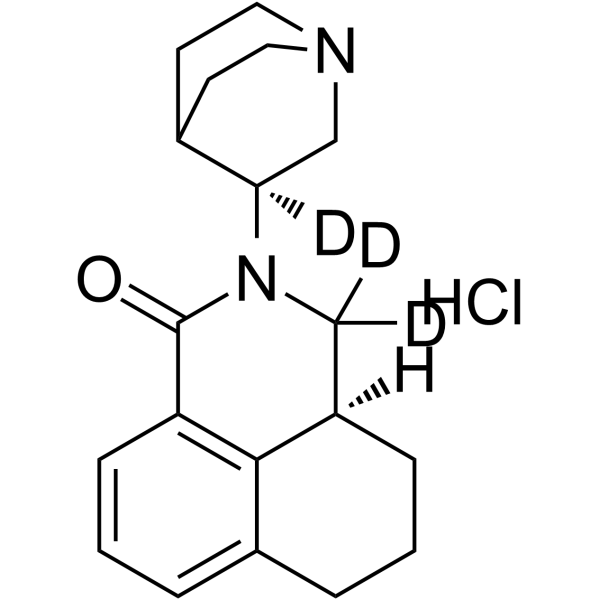Palonosetron-d3 hydrochloride
Modify Date: 2025-08-21 10:34:49

Palonosetron-d3 hydrochloride structure
|
Common Name | Palonosetron-d3 hydrochloride | ||
|---|---|---|---|---|
| CAS Number | 1246816-81-8 | Molecular Weight | 335.89 | |
| Density | N/A | Boiling Point | N/A | |
| Molecular Formula | C19H22D3ClN2O | Melting Point | N/A | |
| MSDS | N/A | Flash Point | N/A | |
Use of Palonosetron-d3 hydrochloridePalonosetron-d3 hydrochloride is the deuterium labeled Palonosetron hydrochloride. Palonosetron hydrochloride is a 5-HT3 antagonist used in the prevention and treatment of chemotherapy-induced nausea and vomiting (CINV)[1][2]. |
| Name | Palonosetron-d3 hydrochloride |
|---|
| Description | Palonosetron-d3 hydrochloride is the deuterium labeled Palonosetron hydrochloride. Palonosetron hydrochloride is a 5-HT3 antagonist used in the prevention and treatment of chemotherapy-induced nausea and vomiting (CINV)[1][2]. |
|---|---|
| Related Catalog | |
| In Vitro | Stable heavy isotopes of hydrogen, carbon, and other elements have been incorporated into drug molecules, largely as tracers for quantitation during the drug development process. Deuteration has gained attention because of its potential to affect the pharmacokinetic and metabolic profiles of drugs[1]. |
| References |
| Molecular Formula | C19H22D3ClN2O |
|---|---|
| Molecular Weight | 335.89 |
| InChIKey | OLDRWYVIKMSFFB-RAVRUBKISA-N |
| SMILES | Cl.O=C1c2cccc3c2C(CCC3)CN1C1CN2CCC1CC2 |